Papers by Frances S Connelly
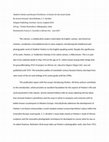
African Arts, 2017
This volume, a collaborative project undertaken by English, Latvian, and American scholars, const... more This volume, a collaborative project undertaken by English, Latvian, and American scholars, constitutes a foundational text in many respects, introducing the intellectual and photographic work of Vladimir Markov to the English-speaking world. Despite the significance of his work, Markov, or Voldemārs Matvejs in his native Latvian, is little known. This is in part due to his untimely death in May 1914 at the age of 37, which meant among other things that his groundbreaking 1913-14 project on African art, Iskusstvo Negrov (Negro Art), was not published until 1919. The turbulent politics of twentieth-century Russian history also kept from view much of the art and writings of its avant-garde until the 1990s. This publication opens with five essays introducing Markov. All three authors contribute to the introduction, which provides an excellent foundation for the aspects of Markov's life and work presented in this volume. Jeremy Howard follows with an essay exploring the key ideas that animate Markov's primitivism and the ways in which it compares and contrasts with its better-known counterparts in Western Europe. Irēna Bužinska addresses the development of Markov's art theory and provides a much-needed context concerning Markov's place within the innovative Russian avant-garde. Z. S. Strother's essay looks closely at Markov's study of African sculpture and the innovative photographic techniques he developed to convey what he saw as its salient features. Bužinska's final essay takes up Markov's photographic work, also from 1913, documenting the arts of the indigenous peoples of Northern Asia, which was to be part of another book he referred to as The Art of the Eskimos. The second half of this study is comprised
Art Journal, 1993
JSTOR is a not-for-profit service that helps scholars, researchers, and students discover, use, a... more JSTOR is a not-for-profit service that helps scholars, researchers, and students discover, use, and build upon a wide range of content in a trusted digital archive. We use information technology and tools to increase productivity and facilitate new forms of scholarship. For more information about JSTOR, please contact support@jstor.org.

Grotesque The grotesque describes a category of images that fits uneasily within the field of Wes... more Grotesque The grotesque describes a category of images that fits uneasily within the field of Western aesthetics and art history. The relative neglect of the grotesque may be attributed in part to the classical foundations of these disciplines. The grotesque represents the inverse of beauty and design so central to the classical ideal. This ideal is exemplified in the techniques of the famed Greek artist Zeuxis, who combined the best features of several models in order to create one figure of perfect and unified beauty. In contrast, the grotesque is formed by combining parts of unlike things, seemingly without reason or purpose. Also weighing against the grotesque is its extreme variability, its irreverence, and its resistance to rules or fixed categories. As Victor Hugo observed, there is only one standard for ideal beauty, whereas the variations and combinations possible for the grotesque are limitless. One can go further and say that these combinations are also unpredictable, because they defy logic and deliberately break down established boundaries. If a fish tail can be attached to a woman's torso, to use Horace's example, or a child can sprout from a flower, what rules can be established for the grotesque? These unpredictable mixtures provoke contradictory responses in the viewer, fusing humor with horror, disgust with empathy, repulsion with desire. Perhaps most antithetical to aesthetic inquiry is the sheer concreteness of the grotesque. Associated with the earthy grotto or cave, the womb and the grave, the sexual and the scatalogical, and just as likely to be constructed from animal or plant as from human forms, the grotesque exudes a physicality that seems to resist leaps to transcendental thoughts or logical arguments.
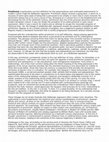
Primitivism A particularly succinct definition for this polymorphous and multivalent phenomenon i... more Primitivism A particularly succinct definition for this polymorphous and multivalent phenomenon in modern culture might be deliberate regression. Primitivism always involves a going back, a return to, a recovery of some early state of being that is perceived to be simpler or more vital or more innocent; for primitivism always has at its core a sense of loss. Emerging as a cultural force in the Enlightenment and dominating the arts of the twentieth century, primitivism was one of the principal directions taken by modern European culture. It was not simply the emulation of so-called primitive or early visual expression; rather it was a search for origins and an attempt to escape the inexorable progress of historical time. Yet, the linkage of deliberate with regression reveals the powerful contradiction within primitivism. Regress is not a simple antonym of progress, but a negative-to-positive relation as well.
Book chapters by Frances S Connelly
Cambridge University Press, 2012
Cambridge University Press, 2012
Cambridge University Press, 2012
Cambridge University Press, 2012
Cambridge University Press, 2012
Cambridge University Press, 2012

This book establishes a fresh and expansive view of the grotesque in Western art and culture, fro... more This book establishes a fresh and expansive view of the grotesque in Western art and culture, from 1500 to the present day. Following the nonlinear evolution of the grotesque, Frances S. Connelly analyzes key works, situating them within their immediate social and cultural contexts, as well as their place in the historical tradition. By taking a long historical view, the book reveals the grotesque to be a complex and continuous tradition comprising several distinct strands: the ornamental, the carnivalesque and caricatural, the traumatic, and the profound. The book articulates a model for understanding the grotesque as a rupture of cultural boundaries that compromises and contradicts accepted realities. Connelly demonstrates that the grotesque is more than a style, genre, or subject; it is a cultural phenomenon engaging the central concerns of the humanistic debate today. Hybrid, ambivalent, and changeful, the grotesque is a shaping force in the modern era. Frances S. Connelly is professor of art history at the University of Missouri–Kansas City. She is the author of The Sleep of Reason: Primitivism in Modern European Art and Aesthetics and the editor of Modern Art and the Grotesque, and she has published numerous articles and book chapters on topics pertaining to the intersection of art and anthropology.
Paradigms of Renaissance Grotesques, ed. Damiano Acciarino, 2019
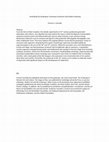
Paradigms of Renaissance Grotesques, ed. Damiano Acciarino. University of Toronto Press, 2019
From the time of their inception, the stylistic experiments of 16th-century grottesche generated ... more From the time of their inception, the stylistic experiments of 16th-century grottesche generated admiration and criticism. Less attention has been paid to the ways in which this figured ornamentation ruptured ut pictura poesis and offered alternate ways to make meaning. It was common among Renaissance observers such as Lomazzo and Ligorio to link grottesche with Egyptian hieroglyphics and other emblematic forms. This essay explores the ongoing debates concerning the grotesque's fusion of ornament with argument, showing that this aspect of grotesque expression provoked significant experimentation in the arts of the 18th and 19th centuries. While the normative view, from Winckelmann to Kant and Hegel, was that grotesque ornament had no legitimate right to represent, a substantive counter-argument emerged among artists and intellectuals who wanted to free the image from formulaic academic narratives. Artists from the Romantic movement, including Blake and Runge, experimented with associative juxtapositions where meanings were conveyed in ways closer to emblems than to dramatic narrative. Later avant-garde artists like Gauguin and Redon, who espoused a new ornamental style of art, called arabesque, pushed these ideas even further. Put briefly, the grottesche of the 16th century set in motion an alternate means of expression with significant impact on the development of modernism.
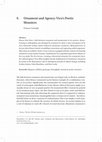
Ornament and Monstrosity in Early Modern Art, eds. Chris Askholt Hammeken and Maria Fabricius Hansen [all rights reserved; further distribution prohibited], 2019
Horace first drew a link between ornament and monstrosity in Ars poetica, characterising as misbe... more Horace first drew a link between ornament and monstrosity in Ars poetica, characterising as misbegotten any attempts of ornament to claim a voice and agency of its own. Sixteenth-century artists embraced monstrous ornament, called grottesche, to do just what Horace feared; scrambling conventions and rupturing settled argument. More than an aesthetic choice, it was a means to grapple with the contests of meaning unloosed in early modern Europe.
This essay argues that Giambattista Vico's 1725 study, The New Science, expanded on these debates, creating a theoretical armature for ornament's broader cultural agency.
Vico's insights into the deployment of 'monstrous' ornament as a means to grapple with and shape radical change are especially pertinent today, as we see in the powerful poetic monsters created by such artists as Gonkar Gyatso, Yinka Shonibare, and Hew Locke.
El Factor Grotesco, ed. José Lebrero Stals, exh.cat., Museo Picasso Málaga, Spain, 2012
Essay on the grotesque turn in Modern British art, published in exh. cat., El Factor Grotesco, Mu... more Essay on the grotesque turn in Modern British art, published in exh. cat., El Factor Grotesco, Museo Picasso Malaga.
Lo grotesco en el arte y la cultura occidentales: La imagen en juego (trans. Amaya Bozal), 2012
The Pennsylvania State University Press, 1995
Introduction to the book.
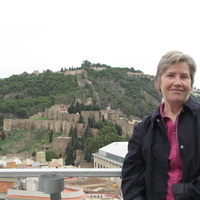


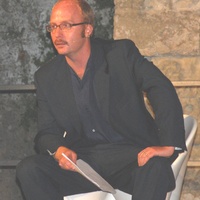







Uploads
Papers by Frances S Connelly
Book chapters by Frances S Connelly
This essay argues that Giambattista Vico's 1725 study, The New Science, expanded on these debates, creating a theoretical armature for ornament's broader cultural agency.
Vico's insights into the deployment of 'monstrous' ornament as a means to grapple with and shape radical change are especially pertinent today, as we see in the powerful poetic monsters created by such artists as Gonkar Gyatso, Yinka Shonibare, and Hew Locke.
This essay argues that Giambattista Vico's 1725 study, The New Science, expanded on these debates, creating a theoretical armature for ornament's broader cultural agency.
Vico's insights into the deployment of 'monstrous' ornament as a means to grapple with and shape radical change are especially pertinent today, as we see in the powerful poetic monsters created by such artists as Gonkar Gyatso, Yinka Shonibare, and Hew Locke.